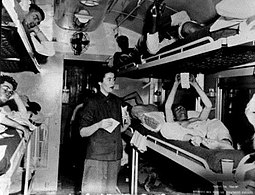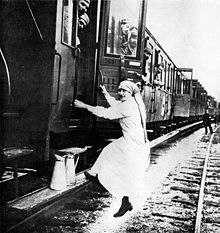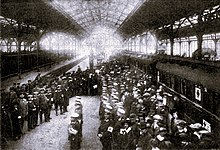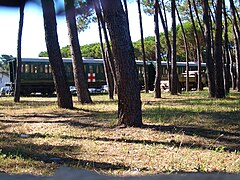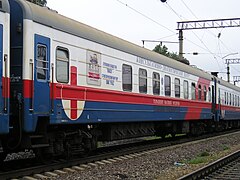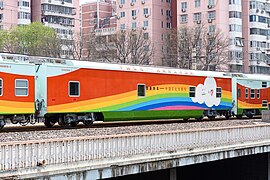
Emergency medical services (EMS), also known as ambulance services or paramedic services, are emergency services that provide urgent pre-hospital treatment and stabilisation for serious illness and injuries and transport to definitive care. They may also be known as a first aid squad, FAST squad, emergency squad, ambulance squad, ambulance corps, life squad or by other initialisms such as EMAS or EMARS.

An ambulance is a medically equipped vehicle which transports patients to treatment facilities, such as hospitals. Typically, out-of-hospital medical care is provided to the patient during the transport.

Medical evacuation, often shortened to medevac or medivac, is the timely and efficient movement and en route care provided by medical personnel to wounded being evacuated from a battlefield, to injured patients being evacuated from the scene of an accident to receiving medical facilities, or to patients at a rural hospital requiring urgent care at a better-equipped facility using medically equipped air ambulances, helicopters and other means of emergency transport including ground ambulance and maritime transfers

A hospital ship is a ship designated for primary function as a floating medical treatment facility or hospital. Most are operated by the military forces of various countries, as they are intended to be used in or near war zones. In the 19th century, redundant warships were used as moored hospitals for seamen.
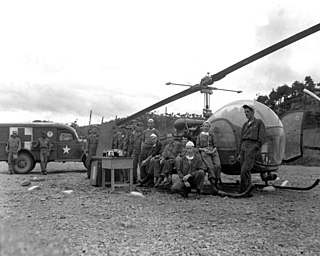
Mobile Army Surgical Hospitals (MASH) were U.S. Army field hospital units conceptualized in 1946 as replacements for the obsolete World War II-era Auxiliary Surgical Group hospital units. MASH units were in operation from the Korean War to the Gulf War before being phased out in the early 2000s. Each MASH unit had 60 beds, as well as surgical, nursing, and other enlisted and officer staff available at all times. MASH units filled a vital role in military medicine by providing support to army units upwards of 10,000 to 20,000 soldiers. These units had a low mortality rate compared to others, as the transportation time to hospitals was shorter, resulting in fewer patients dying within the "Golden Hour", the first hour after an injury is first sustained, which is referred to in trauma as the "most important hour". The U.S. Army deactivated the last MASH unit on February 16, 2006, and the successors to Mobile Army Surgical Hospitals are combat support hospitals.
A light horse field ambulance was an Australian World War I military unit whose purpose was to provide medical transport and aid to the wounded and sick soldiers of an Australian Light Horse brigade.
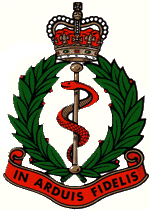
The Royal Army Medical Corps (RAMC) is a specialist corps in the British Army which provides medical services to all Army personnel and their families, in war and in peace. The RAMC, the Royal Army Veterinary Corps, the Royal Army Dental Corps and Queen Alexandra's Royal Army Nursing Corps form the Army Medical Services.

A combat medic is responsible for providing emergency medical treatment at a point of wounding in a combat or training environment, as well as primary care and health protection and evacuation from a point of injury or illness. Additionally, medics may also be responsible for the creation, oversight, and execution of long-term patient care plans in consultation with or in the absence of a readily available doctor or advanced practice provider. Combat medics may be used in hospitals and clinics, where they have the opportunity to work in additional roles, such as operating medical and laboratory equipment and performing and assisting with procedures.
The 1st Close Health Battalion (1CHB) was a unit of the 17th Sustainment Brigade of the Australian Army. It was headquartered at the Robertson Army Barracks in Darwin, but had sub-units located in Darwin, Townsville and Brisbane. The unit traced its lineage back to the 1st Field Hospital, which was raised in the 1960s for service as part of Australia's contribution to the Vietnam War. Since then, the unit has changed names twice and personnel have been deployed on numerous peacekeeping and warlike operations throughout Africa, the Middle East and the Asia-Pacific region.
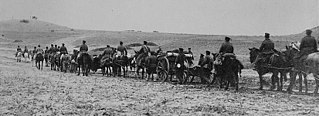
In military contexts, a train is the logistical transport elements accompanying a military force. Often called a supply train or baggage train, it has the job of providing materiel for their associated combat forces when in the field. When focused on provision of field artillery and its ammunition, it may be termed an artillery train. For sieges, the addition of siege engines to an artillery train was called a siege train. These military terms predate, and do not imply a railway train, though railways are often employed for modern logistics, and can include armoured trains.

The history of the ambulance begins in ancient times, with the use of carts to transport patients. Ambulances were first used for emergency transport in 1487 by the Spanish forces during the siege of Málaga by the Catholic monarchs against the Emirate of Granada, and civilian variants were put into operation in the 1830s. Advances in technology throughout the 19th and 20th centuries led to the modern self-powered ambulance.

The state of medical knowledge at the time of the Civil War was extremely primitive. Doctors did not understand infection, and did little to prevent it. It was a time before antiseptics, and a time when there was no attempt to maintain sterility during surgery. No antibiotics were available, and minor wounds could easily become infected, and hence fatal. While the typical soldier was at risk of being hit by rifle or artillery fire, he faced an even greater risk of dying from disease.

In the British Army and other Commonwealth militaries, a Casualty Clearing Station (CCS) is a military medical facility behind the front lines that is used to treat wounded soldiers. A CCS would usually be located just beyond the range of enemy artillery and often near transportation facilities. The CCS receives battlefield casualties from regimental aid posts located in the combat zone. Casualties that cannot be adequately treated in the CCS are stabilized there before being transported to a field hospital or military hospital.
The U.S. Ambulance Corps was a unit of the Union Army during the American Civil War. The Ambulance Corps was initially formed as a unit only within the Army of the Potomac, due to the effort of several Army officials, notably Dr. Jonathan Letterman, medical director of the Army of the Potomac, and William Hammond, the U.S. Surgeon-General. Until August 1862, the lack of trained ambulance drivers meant that the wounded had to wait a long time to receive medical care. This changed during the Battle of Antietam in September 1862 when his new system allowed the wounded men to be transferred quickly and prevent fewer deaths.

New Orleans Emergency Medical Services is the primary provider of advanced life support emergency medical services to the city of New Orleans, Louisiana, United States. Unlike most other emergency medical services in the United States, New Orleans EMS operates as a third service and is not part of the New Orleans Fire Department; rather, New Orleans EMS is operated by the New Orleans Health Department and the New Orleans Office of Homeland Security and Emergency Preparedness.

Camp Letterman was an American Civil War military hospital, which was erected near the Gettysburg Battlefield to treat more than 14,000 Union and 6,800 Confederate wounded of the Battle of Gettysburg at the beginning of July, 1863.

The 16th (Parachute) Field Ambulance was a Royal Army Medical Corps unit of the British airborne forces during the Second World War. The unit was the first parachute field ambulance unit of the British Army. Their first deployment was in Operation Torch the Allied landings in North Africa. This was followed by Operation Fustian during the Allied invasion of Sicily. Their third mission was Operation Slapstick, a seaborne landing at Taranto in Italy.

Air medical services are the use of aircraft, including both fixed-wing aircraft and helicopters to provide various kinds of medical care, especially prehospital, emergency and critical care to patients during aeromedical evacuation and rescue operations.

The 1st Medical Brigade is a medical brigade of the United States Army. It is located at Fort Cavazos, Texas, providing health care and medical services to the Fort Cavazos community, and continuing training in its combat support mission.

Though the United Kingdom remained neutral during the Franco-Prussian War of 1870–71, it provided ambulances and other medical assistance to both combatants and the civilians affected by the war. The term "ambulance" at this time denoted a medical organisation that provided field hospitals, transport and surgical operations, not the more limited modern use. The British public donated more than £300,000 to provide medical assistance during the war. The ambulances, together with those of other neutral organisations, proved very effective at treating casualties, and following the war all major powers took steps to implement similar arrangements for future wars.


